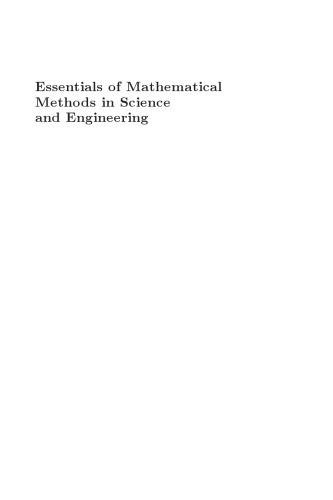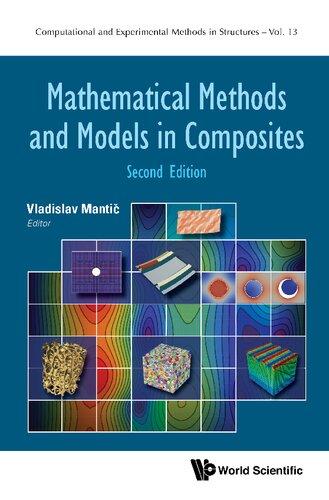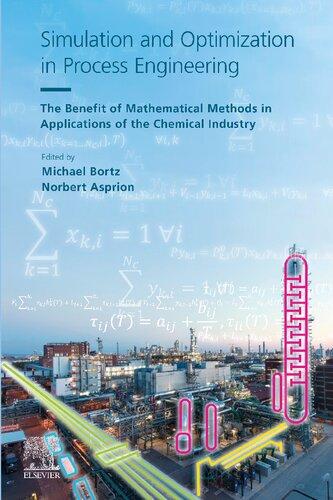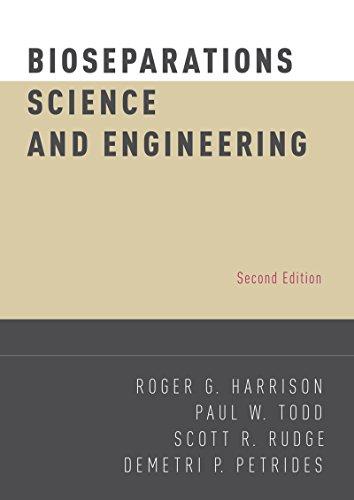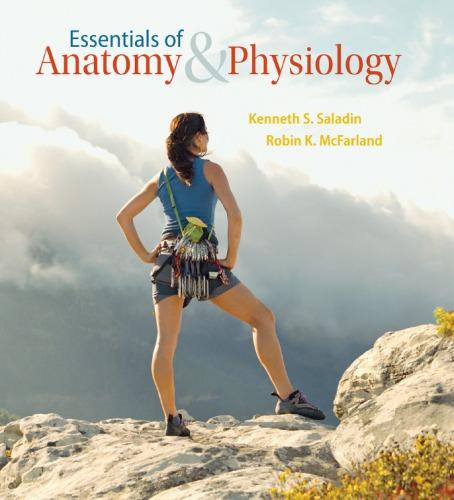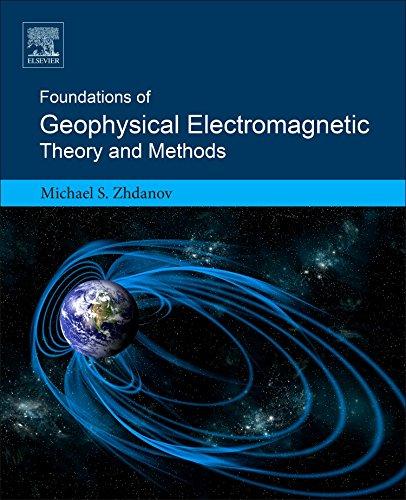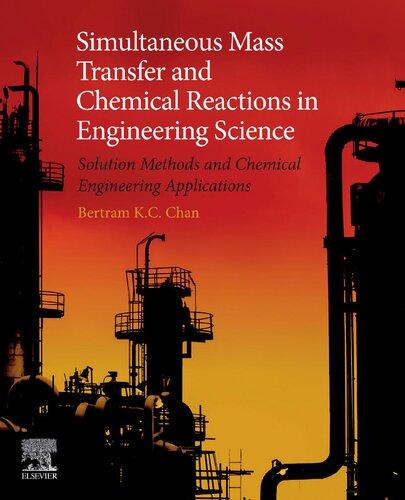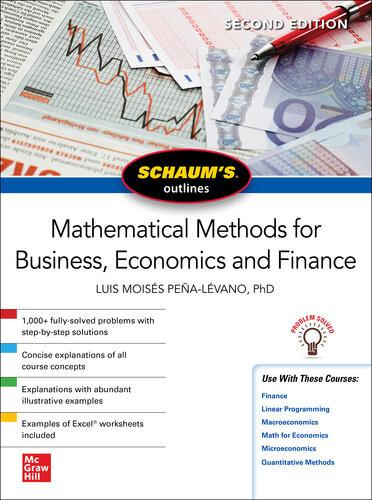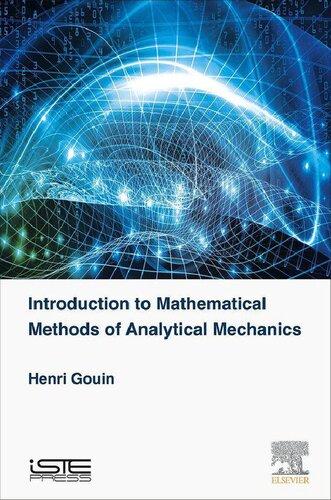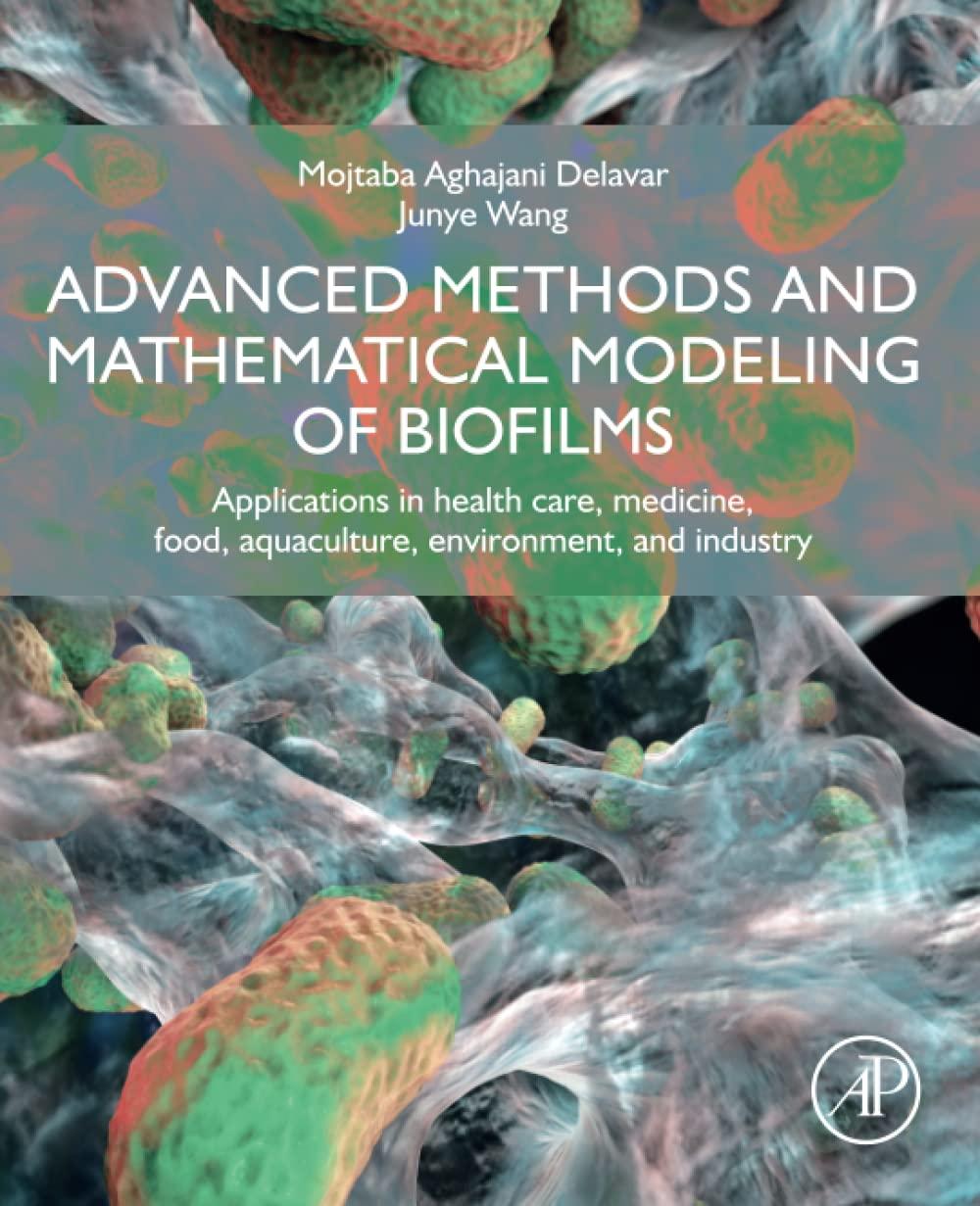EssentialsofMathematical MethodsinScience andEngineering
SECONDEDITION
Sel¸cukS¸.Bayın
InstituteofAppliedMathematics
MiddleEastTechnicalUniversity
Ankara,Turkey
Thiseditionfirstpublished2020
c 2020JohnWiley&Sons,Inc.
EditionHistory
JohnWiley&Sons(1e,2008)
Allrightsreserved.Nopartofthispublicationmaybereproduced,storedinaretrievalsystem,or transmitted,inanyformorbyanymeans,electronic,mechanical,photocopying,recordingorotherwise, exceptaspermittedbylaw.Adviceonhowtoobtainpermissiontoreusematerialfromthistitleis availableat http://www.wiley.com/go/permissions
TherightofSel¸cukS¸.Bayıntobeidentifiedastheauthorofthisworkhasbeenassertedinaccordance withlaw.
RegisteredOffice
JohnWiley&Sons,Inc.,111RiverStreet,Hoboken,NJ07030,USA
EditorialOffice
111RiverStreet,Hoboken,NJ07030,USA
Fordetailsofourglobaleditorialoffices,customerservices,andmoreinformationaboutWileyproducts visitusat www.wiley.com
Wileyalsopublishesitsbooksinavarietyofelectronicformatsandbyprint-on-demand.Somecontent thatappearsinstandardprintversionsofthisbookmaynotbeavailableinotherformats.
LimitofLiability/DisclaimerofWarranty
Whilethepublisherandauthorshaveusedtheirbesteffortsinpreparingthiswork,theymakeno representationsorwarrantieswithrespecttotheaccuracyorcompletenessofthecontentsofthiswork andspecificallydisclaimallwarranties,includingwithoutlimitationanyimpliedwarrantiesof merchantabilityorfitnessforaparticularpurpose.Nowarrantymaybecreatedorextendedbysales representatives,writtensalesmaterialsorpromotionalstatementsforthiswork.Thefactthatan organization,website,orproductisreferredtointhisworkasacitationand/orpotentialsourceof furtherinformationdoesnotmeanthatthepublisherandauthorsendorsetheinformationorservices theorganization,website,orproductmayprovideorrecommendationsitmaymake.Thisworkissold withtheunderstandingthatthepublisherisnotengagedinrenderingprofessionalservices.Theadvice andstrategiescontainedhereinmaynotbesuitableforyoursituation.Youshouldconsultwitha specialistwhereappropriate.Further,readersshouldbeawarethatwebsiteslistedinthisworkmay havechangedordisappearedbetweenwhenthisworkwaswrittenandwhenitisread.Neitherthe publishernorauthorsshallbeliableforanylossofprofitoranyothercommercialdamages,including butnotlimitedtospecial,incidental,consequential,orotherdamages.
LibraryofCongressCataloging-in-PublicationData
Names:Bayın,S¸.Sel¸cuk,1951-author.
Title:Essentialsofmathematicalmethodsinscienceandengineering/S¸. Sel¸cukBayın.
Description:Secondedition. | Hoboken,NJ:Wiley,2020. | Includes bibliographicalreferencesandindex.
Identifiers:LCCN2019027661(print) | LCCN2019027662(ebook) | ISBN 9781119580249(hardback) | ISBN9781119580232(adobepdf) | ISBN 9781119580287(epub)
Subjects:LCSH:Science–Mathematics. | Science–Methodology. | Engineering mathematics.
Classification:LCCQ158.5.B392020(print) | LCCQ158.5(ebook) | DDC 501/.51–dc23
LCrecordavailableathttps://lccn.loc.gov/2019027661
LCebookrecordavailableathttps://lccn.loc.gov/2019027662
CoverDesign:Wiley
CoverImage:CourtesyofSel¸cukS¸.Bayın
Setin10/12ptCMR10bySPiGlobal,Chennai,India
PrintedintheUnitedStatesofAmerica
Tomyfather, ¨ OmerBayın
Prefacexxiii Acknowledgmentsxxix 1FunctionalAnalysis1
1.1ConceptofFunction1
1.2ContinuityandLimits3
1.3PartialDifferentiation6
1.4TotalDifferential8
1.5TaylorSeries9
1.6MaximaandMinimaofFunctions13
1.7ExtremaofFunctionswithConditions17
1.8DerivativesandDifferentialsofCompositeFunctions21
1.9ImplicitFunctionTheorem23
1.10InverseFunctions28
1.11IntegralCalculusandtheDefiniteIntegral30
1.12RiemannIntegral32
1.13ImproperIntegrals35
1.14CauchyPrincipalValueIntegrals38
1.15IntegralsInvolvingaParameter40
1.16LimitsofIntegrationDependingonaParameter44
1.17DoubleIntegrals45
1.18PropertiesofDoubleIntegrals47
1.19TripleandMultipleIntegrals48 References49 Problems49
2VectorAnalysis55
2.1VectorAlgebra:GeometricMethod55
2.1.1MultiplicationofVectors57
2.2VectorAlgebra:CoordinateRepresentation60
2.3LinesandPlanes65
2.4VectorDifferentialCalculus67
2.4.1ScalarFieldsandVectorFields67
2.4.2VectorDifferentiation69
2.5GradientOperator70
2.5.1MeaningoftheGradient71
2.5.2DirectionalDerivative72
2.6DivergenceandCurlOperators73
2.6.1MeaningofDivergenceandtheDivergence Theorem75
2.7VectorIntegralCalculusinTwoDimensions79
2.7.1ArcLengthandLineIntegrals79
2.7.2SurfaceAreaandSurfaceIntegrals83
2.7.3AnAlternateWaytoWriteLineIntegrals84
2.7.4Green’sTheorem86
2.7.5InterpretationsofGreen’sTheorem88
2.7.6ExtensiontoMultiplyConnectedDomains89
2.8CurlOperatorandStokes’sTheorem92
2.8.1OnthePlane92
2.8.2InSpace96
2.8.3GeometricInterpretationofCurl99
2.9MixedOperationswiththeDelOperator99
2.10PotentialTheory102
2.10.1GravitationalFieldofaStar105
2.10.2WorkDonebyGravitationalForce106
2.10.3PathIndependenceandExactDifferentials108
2.10.4GravityandConservativeForces109
2.10.5GravitationalPotential111
2.10.6GravitationalPotentialEnergyofaSystem113
2.10.7HelmholtzTheorem115
2.10.8ApplicationsoftheHelmholtzTheorem116
2.10.9ExamplesfromPhysics120 References123 Problems123
3GeneralizedCoordinatesandTensors133
3.1TransformationsbetweenCartesianCoordinates134
3.1.1BasisVectorsandDirectionCosines134
3.1.2TransformationMatrixandOrthogonality136
3.1.3InverseTransformationMatrix137
3.2CartesianTensors139
3.2.1AlgebraicPropertiesofTensors141
3.2.2KroneckerDeltaandthePermutationSymbol145
3.3GeneralizedCoordinates148
3.3.1CoordinateCurvesandSurfaces148
3.3.2WhyUpperandLowerIndices152
3.4GeneralTensors153
3.4.1EinsteinSummationConvention156
3.4.2LineElement157
3.4.3MetricTensor157
3.4.4HowtoRaiseandLowerIndices158
3.4.5MetricTensorandtheBasisVectors160
3.4.6DisplacementVector161
3.4.7LineIntegrals162
3.4.8AreaElementinGeneralizedCoordinates164
3.4.9AreaofaSurface165
3.4.10VolumeElementinGeneralizedCoordinates169
3.4.11InvarianceandCovariance171
3.5DifferentialOperatorsinGeneralizedCoordinates171
3.5.1Gradient171
3.5.2Divergence172
3.5.3Curl174
3.5.4Laplacian178
3.6OrthogonalGeneralizedCoordinates178
3.6.1CylindricalCoordinates179
3.6.2SphericalCoordinates184 References189 Problems189
4DeterminantsandMatrices197
4.1BasicDefinitions197
4.2OperationswithMatrices198
4.3SubmatrixandPartitionedMatrices204
4.4SystemsofLinearEquations207
4.5Gauss’sMethodofElimination208
4.6Determinants211
4.7PropertiesofDeterminants214
4.8Cramer’sRule216
4.9InverseofaMatrix221
4.10HomogeneousLinearEquations224 References225 Problems225 5LinearAlgebra233
5.1FieldsandVectorSpaces233
5.2LinearCombinations,Generators,andBases236
5.3Components238
5.4LinearTransformations241
5.5MatrixRepresentationofTransformations242
5.6AlgebraofTransformations244
5.7ChangeofBasis246
5.8InvariantsunderSimilarityTransformations247
5.9EigenvaluesandEigenvectors248
5.10MomentofInertiaTensor257
5.11InnerProductSpaces262
5.12TheInnerProduct262
5.13OrthogonalityandCompleteness265
5.14Gram–SchmidtOrthogonalization267
5.15EigenvalueProblemforRealSymmetricMatrices268
5.16PresenceofDegenerateEigenvalues270
5.17QuadraticForms276
5.18HermitianMatrices279
5.19MatrixRepresentationofHermitianOperators283
5.20FunctionsofMatrices284
5.21FunctionSpaceandHilbertSpace286
5.22Dirac’sBraandKetVectors287 References288 Problems289
6PracticalLinearAlgebra293
6.1SystemsofLinearEquations294
6.1.1MatricesandElementaryRowOperations295
6.1.2Gauss-JordanMethod295
6.1.3InformationFromtheRow-EchelonForm300
6.1.4ElementaryMatrices301
6.1.5InversebyGauss-JordanRow-Reduction302
6.1.6RowSpace,ColumnSpace,andNullSpace303
6.1.7BasesforRow,Column,andNullSpaces307
6.1.8VectorSpacesSpannedbyaSetofVectors310
6.1.9RankandNullity312
6.1.10LinearTransformations315
6.2NumericalMethodsofLinearAlgebra317
6.2.1Gauss-JordanRow-ReductionandPartial Pivoting317
6.2.2LU-Factorization321
6.2.3SolutionsofLinearSystemsbyIteration325
6.2.4Interpolation328
6.2.5PowerMethodforEigenvalues331
6.2.6SolutionofEquations333
6.2.7NumericalIntegration343 References349 Problems350
7ApplicationsofLinearAlgebra355
7.1ChemistryandChemicalEngineering355
7.1.1IndependentReactionsandStoichiometricMatrix356
7.1.2IndependentReactionsfromaSetofSpecies359
7.2LinearProgramming362
7.2.1TheGeometricMethod363
7.2.2TheSimplexMethod367
7.3LeontiefInput–OutputModelofEconomy375
7.3.1LeontiefClosedModel375
7.3.2LeontiefOpenModel378
7.4ApplicationstoGeometry381
7.4.1OrbitCalculations382
7.5EliminationTheory383
7.5.1QuadraticEquationsandtheResultant384
7.6CodingTheory388
7.6.1FieldsandVectorSpaces388
7.6.2Hamming(7,4)Code390
7.6.3HammingAlgorithmforErrorCorrection393
7.7Cryptography396
7.7.1Single-KeyCryptography396
7.8GraphTheory399
7.8.1BasicDefinition399
7.8.2Terminology400
7.8.3Walks,Trails,PathsandCircuits402
7.8.4TreesandFundamentalCircuits404
7.8.5GraphOperations404
7.8.6CutSetsandFundamentalCutSets405
7.8.7VectorSpaceAssociatedwithaGraph407
7.8.8RankandNullity409
7.8.9Subspacesin WG 410
7.8.10DotProductandOrthogonalvectors411
7.8.11MatrixRepresentationofGraphs413
7.8.12DominanceDirectedGraphs417
7.8.13GrayCodesinCodingTheory419 References419 Problems420
8SequencesandSeries425
8.1Sequences426
8.2InfiniteSeries430
8.3AbsoluteandConditionalConvergence431
8.3.1ComparisonTest431
8.3.2LimitComparisonTest431
8.3.3IntegralTest431
8.3.4RatioTest432
8.3.5RootTest432
8.4OperationswithSeries436
8.5SequencesandSeriesofFunctions438
8.6 M -TestforUniformConvergence441
8.7PropertiesofUniformlyConvergentSeries441
8.8PowerSeries443
8.9TaylorSeriesandMaclaurinSeries446
8.10IndeterminateFormsandSeries447 References448 Problems448
9ComplexNumbersandFunctions453
9.1TheAlgebraofComplexNumbers454
9.2RootsofaComplexNumber458
9.3InfinityandtheExtendedComplexPlane460
9.4ComplexFunctions463
9.5LimitsandContinuity465
9.6DifferentiationintheComplexPlane467
9.7AnalyticFunctions470
9.8HarmonicFunctions471
9.9BasicDifferentiationFormulas474
9.10ElementaryFunctions475
9.10.1Polynomials475
9.10.2ExponentialFunction476
9.10.3TrigonometricFunctions477
9.10.4HyperbolicFunctions478
9.10.5LogarithmicFunction479
9.10.6PowersofComplexNumbers481
9.10.7InverseTrigonometricFunctions483 References483 Problems484 10ComplexAnalysis491
10.1ContourIntegrals492
10.2TypesofContours494
10.3TheCauchy–GoursatTheorem497
10.4IndefiniteIntegrals500
10.5SimplyandMultiplyConnectedDomains502
10.6TheCauchyIntegralFormula503
10.7DerivativesofAnalyticFunctions505
10.8ComplexPowerSeries506
10.8.1TaylorSerieswiththeRemainder506
10.8.2LaurentSerieswiththeRemainder510
10.9ConvergenceofPowerSeries514
10.10ClassificationofSingularPoints514
10.11ResidueTheorem517 References522 Problems522
11OrdinaryDifferentialEquations527
11.1BasicDefinitionsforOrdinaryDifferentialEquations528
11.2First-OrderDifferentialEquations530
11.2.1UniquenessofSolution530
11.2.2MethodsofSolution532
11.2.3DependentVariableIsMissing532
11.2.4IndependentVariableIsMissing532
11.2.5TheCaseofSeparable f (x,y )532
11.2.6Homogeneous f (x,y )ofZerothDegree533
11.2.7SolutionWhen f (x,y )IsaRationalFunction533
11.2.8LinearEquationsofFirst-order535
11.2.9ExactEquations537
11.2.10IntegratingFactors539
11.2.11BernoulliEquation542
11.2.12RiccatiEquation543
11.2.13EquationsthatCannotBeSolvedfor y 546
11.3Second-OrderDifferentialEquations548
11.3.1TheGeneralCase549
11.3.2LinearHomogeneousEquationswithConstant Coefficients551
11.3.3OperatorApproach556
11.3.4LinearHomogeneousEquationswithVariable Coefficients557
11.3.5Cauchy–EulerEquation560
11.3.6ExactEquationsandIntegratingFactors561
11.3.7LinearNonhomogeneousEquations564
11.3.8VariationofParameters564
11.3.9MethodofUndeterminedCoefficients566
11.4LinearDifferentialEquationsofHigherOrder569
11.4.1WithConstantCoefficients569
11.4.2WithVariableCoefficients570
11.4.3NonhomogeneousEquations570
11.5InitialValueProblemandUniquenessoftheSolution571
11.6SeriesSolutions:FrobeniusMethod571
11.6.1FrobeniusMethodandFirst-orderEquations581 References582 Problems582
12Second-OrderDifferentialEquationsandSpecialFunctions589
12.1LegendreEquation590
12.1.1SeriesSolution590
12.1.2EffectofBoundaryConditions593
12.1.3LegendrePolynomials594
12.1.4RodriguezFormula596
12.1.5GeneratingFunction597
12.1.6SpecialValues599
12.1.7RecursionRelations600
12.1.8Orthogonality601
12.1.9LegendreSeries603
12.2HermiteEquation606
12.2.1SeriesSolution606
12.2.2HermitePolynomials610
12.2.3ContourIntegralRepresentation611
12.2.4RodriguezFormula612
12.2.5GeneratingFunction613
12.2.6SpecialValues614
12.2.7RecursionRelations614
12.2.8Orthogonality616
12.2.9SeriesExpansionsinHermitePolynomials618
12.3LaguerreEquation619
12.3.1SeriesSolution620
12.3.2LaguerrePolynomials621
12.3.3ContourIntegralRepresentation622
12.3.4RodriguezFormula623
12.3.5GeneratingFunction623
12.3.6SpecialValuesandRecursionRelations624
12.3.7Orthogonality624
12.3.8SeriesExpansionsinLaguerrePolynomials625 References626 Problems626
13Bessel’sEquationandBesselFunctions629
13.1Bessel’sEquationandItsSeriesSolution630
13.1.1BesselFunctions J±m (x),Nm (x), and H (1,2) m (x)634
13.1.2RecursionRelations639
13.1.3GeneratingFunction639
13.1.4IntegralDefinitions641
13.1.5LinearIndependenceofBesselFunctions642
13.1.6ModifiedBesselFunctions Im (x)and Km (x)644
13.1.7SphericalBesselFunctions jl (x),nl (x), and h(1,2) l (x)645
13.2OrthogonalityandtheRootsofBesselFunctions648 13.2.1ExpansionTheorem652
13.2.2BoundaryConditionsfortheBesselFunctions652 References656 Problems656
14PartialDifferentialEquationsandSeparationofVariables661
14.1SeparationofVariablesinCartesianCoordinates662 14.1.1WaveEquation665
14.1.2LaplaceEquation666
14.1.3DiffusionandHeatFlowEquations671
14.2SeparationofVariablesinSphericalCoordinates673
14.2.1LaplaceEquation677
14.2.2BoundaryConditionsforaSphericalBoundary678
14.2.3HelmholtzEquation682
14.2.4WaveEquation683
14.2.5DiffusionandHeatFlowEquations684
14.2.6Time-IndependentSchr¨odingerEquation685
14.2.7Time-DependentSchr¨odingerEquation685
14.3SeparationofVariablesinCylindricalCoordinates686
14.3.1LaplaceEquation688
14.3.2HelmholtzEquation689
14.3.3WaveEquation690
14.3.4DiffusionandHeatFlowEquations691 References701 Problems701 15FourierSeries705
15.1OrthogonalSystemsofFunctions705
15.2FourierSeries711
15.3ExponentialFormoftheFourierSeries712
15.4ConvergenceofFourierSeries713
15.5SufficientConditionsforConvergence715
15.6TheFundamentalTheorem716
15.7UniquenessofFourierSeries717
15.8ExamplesofFourierSeries717
15.8.1SquareWave717
15.8.2TriangularWave719
15.8.3PeriodicExtension720
15.9FourierSineandCosineSeries721
15.10ChangeofInterval722
15.11IntegrationandDifferentiationofFourierSeries723 References724
Problems724
16FourierandLaplaceTransforms727
16.1TypesofSignals727
16.2SpectralAnalysisandFourierTransforms730
16.3CorrelationwithCosinesandSines731
16.4CorrelationFunctionsandFourierTransforms735
16.5InverseFourierTransform736
16.6FrequencySpectrums736
16.7Dirac-DeltaFunction738
16.8ACasewithTwoCosines739
16.9GeneralFourierTransformsandTheirProperties740
16.10BasicDefinitionofLaplaceTransform743
16.11DifferentialEquationsandLaplaceTransforms746
16.12TransferFunctionsandSignalProcessors748
16.13ConnectionofSignalProcessors750 References753
Problems753
17CalculusofVariations757
17.1ASimpleCase758
17.2VariationalAnalysis759
17.2.1CaseI:TheDesiredFunctionisPrescribedatthe EndPoints761
17.2.2CaseII:NaturalBoundaryConditions762
17.3AlternateFormofEulerEquation763
17.4VariationalNotation765
17.5AMoreGeneralCase767
17.6Hamilton’sPrinciple772
17.7Lagrange’sEquationsofMotion773
17.8DefinitionofLagrangian777
17.9PresenceofConstraintsinDynamicalSystems779
17.10ConservationLaws783
References784
Problems784
18ProbabilityTheoryandDistributions789
18.1IntroductiontoProbabilityTheory790
18.1.1FundamentalConcepts790
18.1.2BasicAxiomsofProbability791
18.1.3BasicTheoremsofProbability791
18.1.4StatisticalDefinitionofProbability794
18.1.5ConditionalProbabilityandMultiplication Theorem795
18.1.6Bayes’Theorem796
18.1.7GeometricProbabilityandBuffon’sNeedle Problem798
18.2PermutationsandCombinations800
18.2.1TheCaseofDistinguishableBallswith Replacement800
18.2.2TheCaseofDistinguishableBallsWithout Replacement801
18.2.3TheCaseofIndistinguishableBalls802
18.2.4BinomialandMultinomialCoefficients803
18.3ApplicationstoStatisticalMechanics804
18.3.1BoltzmannDistributionforSolids805
18.3.2BoltzmannDistributionforGases807
18.3.3Bose–EinsteinDistributionforPerfectGases808
18.3.4Fermi–DiracDistribution810
18.4StatisticalMechanicsandThermodynamics811
18.4.1ProbabilityandEntropy811
18.4.2Derivationof β 812
18.5RandomVariablesandDistributions814
18.6DistributionFunctionsandProbability817
18.7ExamplesofContinuousDistributions819
18.7.1UniformDistribution819
18.7.2GaussianorNormalDistribution820
18.7.3GammaDistribution821
18.8DiscreteProbabilityDistributions821
18.8.1UniformDistribution822
18.8.2BinomialDistribution822
18.8.3PoissonDistribution824
18.9FundamentalTheoremofAverages825
18.10MomentsofDistributionFunctions826
18.10.1MomentsoftheGaussianDistribution827
18.10.2MomentsoftheBinomialDistribution827
18.10.3MomentsofthePoissonDistribution829
18.11Chebyshev’sTheorem831
18.12LawofLargeNumbers832 References833 Problems834
19InformationTheory841
19.1ElementsofInformationProcessingMechanisms844
19.2ClassicalInformationTheory846
19.2.1PriorUncertaintyandEntropyofInformation848
19.2.2JointandConditionalEntropiesofInformation851
19.2.3DecisionTheory854
19.2.4DecisionTheoryandGameTheory856
19.2.5Traveler’sDilemmaandNashEquilibrium862
19.2.6ClassicalBitorCbit866
19.2.7OperationsonCbits869
19.3QuantumInformationTheory871
19.3.1BasicQuantumTheory872
19.3.2Single-ParticleSystemsandQuantum Information878
19.3.3Mach–ZehnderInterferometer880
19.3.4MathematicsoftheMach–Zehnder Interferometer882
19.3.5QuantumBitorQbit886
19.3.6TheNo-CloningTheorem889
19.3.7EntanglementandBellStates890
19.3.8QuantumDenseCoding895
Preface
Afterayearoffreshmancalculus,thebasicmathematicstraininginscienceand engineeringisusuallycompletedduringthesecondandthethirdyearsofthe undergraduatecurriculum.Studentsareusuallyrequiredtotakeasequence ofthreecoursesonthesubjectsofadvancedcalculus,differentialequations, complexcalculus,andintroductorymathematicalphysics.Today,majorityof thescienceandengineeringdepartmentsarefindingitconvenienttouseasingle bookthatassuresuniformformalismandatopicalcoverageintunewiththeir needs.Theobjectiveof EssentialsofMathematicalMethodsinScienceand Engineering istoequipstudentswiththebasicmathematicalskillsrequiredby majorityofthescienceandengineeringundergraduateprograms.
Thebookgivesacoherenttreatmentoftheselectedtopicswithastylethat makestheessentialmathematicalskillseasilyaccessibletoamultidisciplinary audience.Sincethebookiswritteninmodularformat,eachchaptercovers itssubjectthoroughlyandthuscanbereadindependently.Thisalsomakes thebookveryusefulforself-studyandasreferenceorrefresherforscientists. Itisassumedthatthereaderhasbeenexposedtotwosemestersoffreshman calculusorhasacquiredanequivalentlevelofmathematicalmaturity.
Theentirebookcontainsasufficientamountofmaterialforathree-semester coursemeetingthreetofourhoursaweek.Respectingthedisparityofthe mathematicscoursesofferedthroughouttheworld,thetopicalcoverageand themodularstructureofthebookmakeitversatileenoughtobeadoptedfora xxiii
numberofdifferentmathematicscoursesandallowsinstructorstheflexibility toindividualizetheirownteachingwhilemaintainingtheintegrityandthe uniformityofthediscussionsfortheirstudents.
AbouttheSecondEdition
Themainaimofthisbookistomeetthedemandsofthemajorityofthe modernundergraduatephysicsandengineeringprograms.Italsoaimstopreparestudentsforasolidgraduateprogramandestablishesthegroundwork ofmygraduatetextbook MathematicalMethodsinScienceandEngineering, Wiley,secondedition,2018.Thesecondedition,whilemaintainingallthesuccessfulfeaturesofthefirstedition,includestwonewandextensivechapters (Chapters6and7)entitled PracticalLinearAlgebra and ApplicationsofLinear Algebra,respectively,andacomputerfilethatincludesMatlabcodes.
ThenewchaptersweredevelopedandusedasItaughtlinearalgebra (3hrs/week)andmathematicalmethodscourses(3+1h/wk)toengineering students.ThefileincludingtheMatlabcodesisselfexplanatorybutassumes familiaritywiththetextinthebook.Thesecodeswereusedforthelab sectionofthemathematicalmethodscourseItaughttostudentswithno priorMatlabexperience.Thesecodeswillbeavailableasopensourcein https://www.wiley.com,orin http://users.metu.edu.tr/bayin/
Inadditiontothese,numerouschangeshavebeenmadetoassureeasyreadingandsmoothflowofthecomplexmathematicalarguments.Derivationsare givenwithsufficientdetailsothatthereaderwillnotbedistractedbysearching forresultsinotherpartsofthebookorbyneedingtowritedownequations.We haveshowncarefullyselectedkeywordsinboldfaceandframedkeyresultsso thattheneededinformationcanbelocatedeasilyasthereaderscansthrough thepages.
Chapterreferencesaregivenattheendofeachchapterwiththeirfull titles.Additionalresourcesfortheinterestedreaderislistedatthebackwith respecttotheirsubjectmatter.Oursuggestedreferencesisbyallmeansnot meanttobecomplete.Nowadays,readerscanlocateadditionalreferences byasimpleinternetsearch.Inparticular,readerscanusethewebsites: http://en.wikipedia.organdhttp://scienceworld.wolfram.com/.Ofcourse, https://arxiv.org isanindispensabletoolforresearchersonanysubject.
Thisbookconcentratesonanalytictechniques.Computerprogramslike Mathematica® andMaple ™ arecapableofperformingsymbolicaswellas numericalcalculations.Eventhoughtheyareextremelyusefultoscientists,one cannotstressenoughtheimportanceofafullgraspofthebasicmathematical techniqueswiththeirintricaciesandinterdisciplinaryconnections.Onlythen theunderlyingunityandthebeautyoftheuniversebeginstoappear.There arebooksspecificallywrittenformathematicalmethodswiththeseprograms, someofwhichareincludedinourlistforfurtherreadingattheback.
Withtheirexclusivechaptersanduniformlevelofformalism,thisbook connectswithmygraduatetextbook MathematicalMethodsinScienceand
Engineering,Wiley,secondedition,2018,thusformingacompletesetspanning awiderangeoffundamentalmathematicaltechniquesforstudents,instructors, andresearchers.
SummaryoftheBook
Chapter1.FunctionalAnalysis: Thischapteraimstofillthegapbetween theintroductorycalculusandtheadvancedmathematicalanalysiscourses.It introducesthebasictechniquesthatareusedthroughoutmathematics.Limits, derivatives,integrals,extremumoffunctions,implicitfunctiontheorem,inverse functions,andimproperintegralsareamongthetopicsdiscussed.
Chapter2.VectorAnalysis: Sincemostoftheclassicaltheoriescan beintroducedintermsofvectors,wepresentaratherdetailedtreatmentof vectorsandtheirtechniques.Vectoralgebra,vectordifferentiation,gradient, divergenceandcurloperators,vectorintegration,Green’stheorem,integral theorems,andtheessentialelementsofthepotentialtheoryareamongthe topicscovered.
Chapter3.GeneralizedCoordinatesandTensors: Startingwiththe Cartesiancoordinates,wediscussgeneralizedcoordinatesystemsandtheir transformations.Basisvectors,transformationmatrix,lineelement,reciprocal basisvectors,covariantandcontravariantcomponents,differentialoperatorsin generalizedcoordinates,andintroductiontoCartesianandgeneraltensorsare amongtheotheressentialtopicsofmathematicalmethods.
Chapter4.DeterminantsandMatrices: Asystematictreatmentof thebasicpropertiesandmethodsofdeterminantsandmatricesthatare muchneededinscienceandengineeringapplicationsarepresentedherewith examples.
Chapter5.LinearAlgebra: Thischapterstartswithadiscussionof abstractlinearspaces,alsocalledvectorspaces,andcontinueswithsystemsof linearequations,innerproductspaces,eigenvalueproblems,quadraticforms, Hermitianmatrices,andDirac’sbraandketvectors.
Chapter6.PracticalLinearAlgebra: Inthepreviouschapter,weconcentrateontheabstractpropertiesoflinearalgebra.Inthischapter,weintroducelinearalgebrafromthepractitionerspointofview.Inthefirstpart,we startwithsystemsoflinearequationsanddiscussGauss-Jordanreduction, row-echelonforms,elementarymatrices,rowspace,columnspaceandnull space,rankandnullity,etc.Inthesecondpart,weintroducethenumerical methodsoflinearalgebra.Partialpivoting,LU-factorization,iterationmethod, interpolation,powermethodforeigenvalues,numericalintegration,etc.are amongtheinterestingtopicsdiscussed.Inouraccompanyingwebsite,wealso haveMatlabcodesthatthereaderscanexperimentwiththemethodsintroducedinthischapter.
Chapter7.ApplicationsofLinearAlgebra: Thischapterintroduces someoftheimportantapplicationsoflinearalgebrafromdifferentbranchesof
scienceandengineering.Wegiveexamplesfromchemicalengineering,linear programming,economics,geometry,eliminationtheory,codingtheory,cryptography,andgraphtheory.
Chapter8.SequencesandSeries: Thischapterstartswithsequences andseriesofnumbersandthenintroducesabsoluteconvergenceandtestsfor convergence.Wethenextendourdiscussiontoseriesoffunctionsandintroduce theconceptofuniformconvergence.PowerseriesandTaylorseriesarediscussed indetailwithapplications.
Chapter9.ComplexNumbersandFunctions: Afterthecomplexnumbersystemisintroducedandtheiralgebraisdiscussed,complexfunctions, complexdifferentiation,Cauchy–Riemannconditionsandanalyticfunctions arethemaintopicsofthischapter.
Chapter10.ComplexAnalysis: Weintroducethecomplexintegral theoremsanddiscussresidues,Taylorseries,andLaurentseriesalongwith theirconvergenceproperties.
Chapter11.OrdinaryDifferentialEquations: Westartwiththegeneralpropertiesofdifferentialequations,theirsolutions,andboundaryconditions.Themostcommonlyencountereddifferentialequationsinapplications areeitherfirst-orsecond-orderordinarydifferentialequations.Hence,wediscussthesetwocasesseparatelyindetailandintroducemethodsoffinding theiranalyticsolutions.Wealsostudylinearequationsofhigherorder.We finallyconcludewiththeFrobeniusmethodappliedtofirst-andsecond-order differentialequationswithinterestingandcarefullyselectedexamples.
Chapter12.Second-OrderDifferentialEquationsandSpecial Functions: Inthischapter,wediscussthreeofthemostfrequentlyencounteredsecond-orderdifferentialequationsofphysicsandengineering,thatis, Legendre,Hermite,andLaguerreequations.Westudytheseequationsin detailfromtheviewpointoftheFrobeniusmethod.Byusingtheboundary conditions,wethenshowhowthecorrespondingorthogonalpolynomial setsareconstructed.Wealsodiscusshowandunderwhatconditionsthese polynomialsetscanbeusedtorepresentageneralsolution.
Chapter13.Bessel’sEquationandBesselFunctions: Besselfunctions areamongthemostfrequentlyusedspecialfunctionsofmathematicalphysics. Sincetheirorthogonalityiswithrespecttotheirrootsandnotwithrespectto aparameterinthedifferentialequation,theyarediscussedhereseparatelyin detail.
Chapter14.PartialDifferentialEquationsandSeparationof Variables: Mostofthesecond-orderordinarydifferentialequationsof physicsandengineeringareobtainedfrompartialdifferentialequationsvia themethodofseparationofvariables.Weintroducethemostcommonly encounteredpartialdifferentialequationsofphysicsandengineeringandshow howthemethodofseparationofvariablesisusedinCartesian,spherical,and cylindricalcoordinates.Interestingexampleshelpthereaderconnectwiththe knowledgegainedinthepreviousthreechapters.
Chapter15.FourierSeries: Wefirstintroduceorthogonalsystemsof functionsandthenconcentrateontrigonometricFourierseries.Wediscuss theirconvergenceanduniquenesspropertiesalongwithspecificexamples.
Chapter16.FourierandLaplaceTransforms: Afterabasicintroductiontosignalanalysisandcorrelationfunctions,weintroduceFourier transformsandtheirinverses.WealsointroduceLaplacetransformsandtheir applicationstodifferentialequations.Wediscussmethodsoffindinginverse Laplacetransformsandtheirapplicationstotransferfunctionsandsignal processors.
Chapter17.CalculusofVariations: Weintroducebasicvariational analysisfordifferenttypesofboundaryconditions.ApplicationstoHamilton’s principleandtoLagrangianmechanicsisinvestigatedindetail.Thepresence ofconstraintsindynamicalsystemsalongwiththeinverseproblemisdiscussed withexamples.
Chapter18.ProbabilityTheoryandDistributions: Someofthe interestingtopicscoveredinthischapterincludethebasictheoryofprobability,permutations,andcombinations,applicationstostatisticalmechanics, andtheconnectionwiththermodynamics.WealsodiscussBayes’theorem, randomvariables,distributions,distributionfunctionsandprobability,fundamentaltheoremofaverages,moments,Chebyshev’stheorem,andthelawof largenumbers.
Chapter19.InformationTheory: Thefirstpartofthischapteris devotedtoclassicalinformationtheory,wherewediscusstopicsfromShannon’s theory,decisiontheory,gametheory,Nashequilibrium,andtraveler’sdilemma. ThedefinitionofCbitandoperationswiththemarealsointroduced.The secondpartofthischapterisonquantuminformationtheory.Afterageneral surveyofquantummechanics,wediscussMach-Zehnderinterferometer,Qbits, entanglement,andBellstates.Alongwiththeno-cloningtheorem,quantum cryptology,quantumdensecoding,andquantumteleportationareamong theotherinterestingtopicsdiscussedinthischapter.Thischapteriswritten withastylethatmakestheseinterestingtopicsaccessibletoawiderangeof audienceswithminimumpriorexposuretoquantummechanics.
CourseSuggestions
Chapters1–17consistofthecontentsofthethree,usuallysequentiallytaught, coremathematicalmethodscoursesthatmostscienceandengineeringdepartmentsrequire.Thesechaptersalsoconsistofthebasicmathematicalskills requiredbymajorityofthemodernundergraduatescienceandengineeringprograms.Chapters1–10canbetaughtduringthesecondyearasatwo-semester course.Duringthefirstorthesecondsemesterofthethirdyear,acoursecomposedofChapters11–17cancompletethesequence.Chapters11–14canalso beusedinaseparateone-semestercourseondifferentialequationsandspecial functions.AlongwiththeMatlabcodes,Chapters4–7canbeusedtodesign
aseparatecourseonlinearalgebrawithalabsection.Instructorscanalsouse thesecodesforin-classdemonstrationswithMatlab.
Thetwoextensivechaptersonprobabilitytheoryandinformationtheory (Chapters18and19)areamongthespecialchaptersofthebook.Eventhough mostofthemathematicalmethodstextbookshavechaptersonprobability,we havetreatedthesubjectwithastyleandlevelthatpreparesthereaderfor thefollowingchapteroninformationtheory.Wehavealsoincludedsectionson applicationstostatisticalmechanicsandthermodynamics.
Thechapteroninformationtheoryisunusualforthemathematicalmethods textbooksatboththeundergraduateandthegraduatelevels.Byselecting certainsections,Chapters18and19canbeincorporatedintotheadvanced undergraduatecurriculum.Intheirentirety,theyaremoresuitabletobeused inagraduatecourse.Sincewereviewthebasicquantummechanicsneeded,we requirenopriorexposuretoquantummechanics.Inthisregard,Chapter19 isalsodesignedtobeusefultobeginningresearchersfromawiderangeof disciplinesinscienceandengineering.
Examplesandexercisesarealwaysanintegralpartofanylearningprocess; hence,thetopicsareintroducedwithanamplenumberofexamples.To maintainthecontinuityofthediscussions,wehavecollectedproblemsat theendofeachchapter,wheretheyarepredominantlylistedinthesame orderthattheyarediscussedwithinthetext.Therefore,werecommend thattheentireproblemsectionsbereadquicklybeforetheirsolutionsare attempted.Forcommunicationsaboutthebook,wewillusethewebsite http://users.metu.edu.tr/bayin/
Sel¸cukS¸.Bayın METU/IAM
Ankara,Turkey April2019
